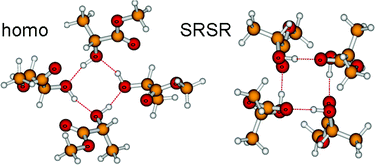Size-selected methyl lactate clusters: fragmentation and spectroscopic fingerprints of chiral recognition
Abstract
A comprehensive experimental study of the OH stretching vibrations of size-selected clusters of enantiopure and racemic ![[double bond, length as m-dash]](https://www.rsc.org/images/entities/char_e001.gif) C bonding in a symmetric SRSR arrangement. The crucial ingredients for this identification are the size-selective IR spectra with their different shifts and line patterns which are reproduced by the calculations.
C bonding in a symmetric SRSR arrangement. The crucial ingredients for this identification are the size-selective IR spectra with their different shifts and line patterns which are reproduced by the calculations.


 Please wait while we load your content...
Please wait while we load your content...